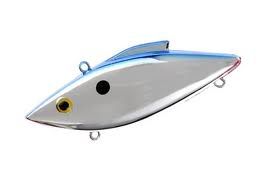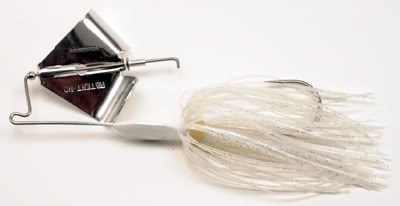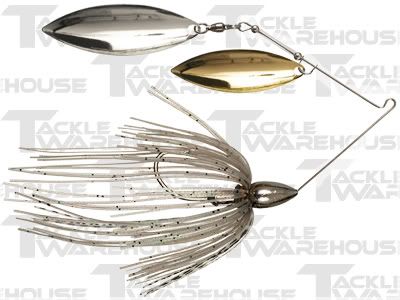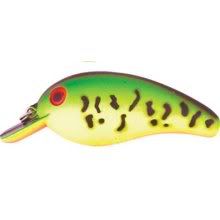Welcome back to "Fishing With Dad." I'm finally beginning to feel better after about a two month fight with cold-like symptoms. In November, I visited the doctor for an allergic reaction. I told him that I was on the verge of a cold and he gave me a shot and some Prednisone (steroid)for the allergic reaction. The Prednisone helped the inflammation in my sinuses, but played havoc with my diabetes by making my blood sugars rise. I've been off the steroid for about 30 days now, and my blood sugars still haven't regulated.
I still have an occasional head full, but I can tell that I'm on the mend. It's amazing how this time of year brings on illness. If you remember, last year around New Year's Day, I spent six days in the hospital with a "mysterious" illness that had almost closed off my throat. 'Til this day, the doctors have no idea what caused that reaction.
I guess there's a saying that "Whatever doesn't kill you, makes you stronger." I sure hope that's true, because I should be pretty darn strong by now... LOL!
In the last blog entry, I wrote about some of the plastic lures that have brought to hand my biggest smallmouth bass. Today, I will be writing about the hard baits that have been extremely successful for me.
The lure that has caught my largest largemouth is also one of my favorite fast moving water smallmouth catchers, the Cotton Cordell Super Spot, Chrome/Black Back, in the 3/8th oz. size.

The largemouth came on the Potomac River just above the Arkendale Flats. We had located a duck blind that was standing in about 2-3' of water. I tossed the Spot very close to the blind and I thought I got hung on wood. But instead, the lure started to move away and I set the hook on a 6.5 lb Potomac River beast. This was the second biggest bass to come to the scales during the two day Pa. Mr. BASS competition out of Smallwood State Park.
The Super Spot has also been responsible for numerous large smallmouth bass I have caught on Lake Aldred over the past five years.
You should not confuse the Super Spot with a Bill Lewis Rat'l Trap. Although they are both lipless crankbaits, they have totally different designs.
Let's put these two lures side-by-side and let you compare:


Most likely, the first thing one would notice is the missing dorsal fin on the Super Spot. Another very noticeable difference is the width of the the two lures. The Rat'l Trap has a thinner and longer nose compared to that of the Super Spot.
When I fish these two lures in water strewn with chunk rocks and boulders, I notice that the Rat'l Trap tends to hang "easier" than the Super Spot due to the way it tracks in water. This difference is crucial for the way I use them.
When fishing the Super Spot, I will use a 6'6" baitcasting rod with a 6:3.1 baitcasting reel. There needs to be a fast action tip to allow the bass to take the lure and turn with it without me setting the hook to early and pulling it from their mouth.
Some like to use "glass" rods to prevent super sensitive feel and quick hook setting reaction. You can achieve very similar results by using a more limber or faster tip.
Another one of my favorite big bass hard baits is the buzzbait. I usually throw a Boogerman in the color white. The Boogerman has a unique flat head that allows it to ride higher than other designed buzzbaits.

In order to make this buzzbait even more attractive as a reaction bait is to bend the blade shaft down so that the blades strike the lead head while spinning. You will be able to tell a distinct difference once you do this. When doing it correctly, the blades will wear the paint off the top of the lure's lead head.
The buzzbait is in my arsenal of "Seek and Destroy" baits.
Also among these specific lures are spinnerbaits. I rarely throw a spinnerbait weighing less than 3/8th oz and no greater than 1/2 oz. I have thrown bigger and smaller on rare occasions and under particular circumstances.
Currently, one of my favorite spinnerbaits is the War Eagle Regular and the War Eagle Screamin' Eagle with the hidden weight design. My two favorite colors are "Mouse" and Green Shad".
War Eagle Spinnerbait in Mouse

War Eagle Spinnerbait in Green Shad

These two colors hardly look any different from one another. But I can guarantee that there is a major color difference one these two are submerged in water and placed side-by-side. The Green Shad has a distinct green coloration in it's skirt which is missing in the Mouse.
I have great success with the Mouse in the early Spring. The remainder of the year, I will usually toss the Green Shad.
Of course, these are not my only spinnerbait colored skirts, but I have found myself throwing them in clear to off colored water most often. I also like chartreuse colored blades and skirts in dirtier to muddier water.
Take a moment and look at the Screamin' Eagle's Hidden Weight design.

Why have I been sticking to the War Eagle brand lately? Well folks, I've been on a journey these past several years seeking the ultimate spinnerbait. My number one criteria is that the main blade cannot be thrown. I have bought and lost so many other brands of spinnerbaits because the larger of the two blades gets thrown in the throes of battling a feisty smallmouth. This is unacceptable to me.
I was once told by a tackle shop owner that I should take my pliers and pinch that wire to help prevent this from happening. Okay, I understand what and why he was suggesting that. But when I pay $7.00 or more for a lure, I expect it to work without having to do much of anything to it... right out of the package. Call me crazy for expecting this, but it is a criteria of mine.
Those spinnerbaits that throw their blades remind me of "planned obsolescence". (Wikipedia - ...policy of deliberately planning or designing a product with a limited useful life, so it will become obsolete or nonfunctional after a certain period.) This does not fly well with me whatsover.
Last, but not least, of my "Seek and Destroy" baits is the crankbait. Hands down, my favorite all-time crankbait is the 3/8th oz. Cotton Cordell Big O in the color Fire Tiger. Heaven knows why smallmouth bass love this color, but it's a winner.

My buddy, Dell, calls this my "Ugly Bait". I have to laugh each and every time I toss this bait and he syas to me, "T, whatcha throwing now? The Ugly Bait? You aren't going to catch anything on that!"
The flat lip allows this bait to run hard on the bottom without too many hang ups. I will beat this lure into rocky bottoms from 3' to 6' without reservation. I expect to get hung sometimes, but the rewards for doing so far outweigh any inconvenience.
If I use a new Big O and at the end of the day, It's lip is not beaten and sans of paint, I wasn't achieving my goals with this bait.
Other very productive Big O colors on the Susquehanna River are the Crawdad and Perch.
Tip: Crankbaits that have the line tie eye screw attached to the bait will usually run shallower than those with the line tie on the lip. The Big O has the eye screw on the head of the bait. The 3/8th Big O will normally run down to 6'.
The Fire Tiger color is also a very attractive color for walleye. It is not unusual for me to land several decent size walleye in a year's time while using this bait in search of smallmouth bass.
Well, there you have it folks. A run down on some of my favorite big bass lures. Most likely for less than $100, one could carry every one that I have mentioned in Part 2 and Part 3.
Keep in mind, that these are not the only lures I own or carry while fishing. Seasonal patterns will dictate which lures I carry. For example, I didn't touch on jerkbaits, hair jigs, grubs, etc. Each and every lure has it's place and time for catching big bass.
I hope you enjoyed this little series.
Take Care,
Dad
